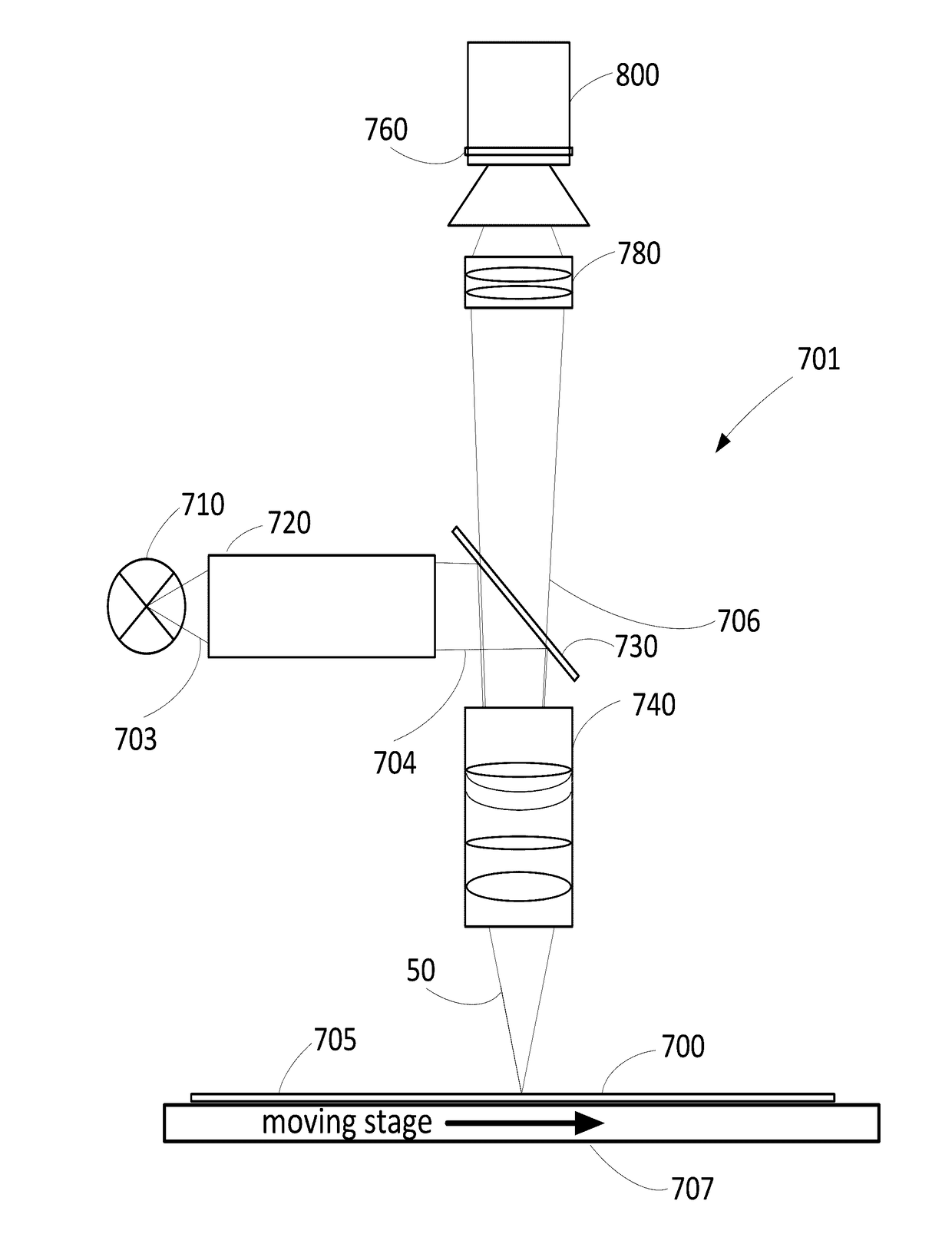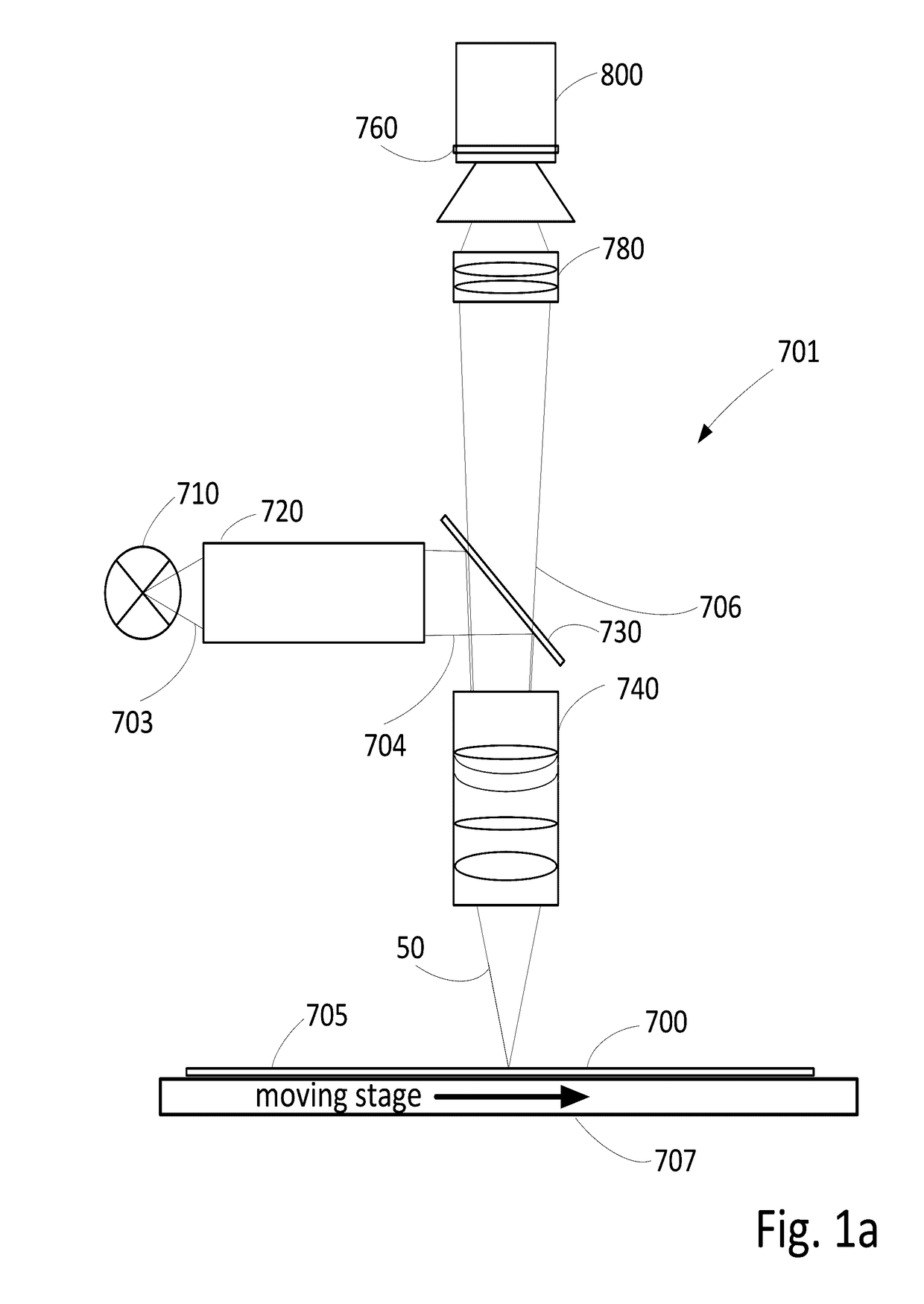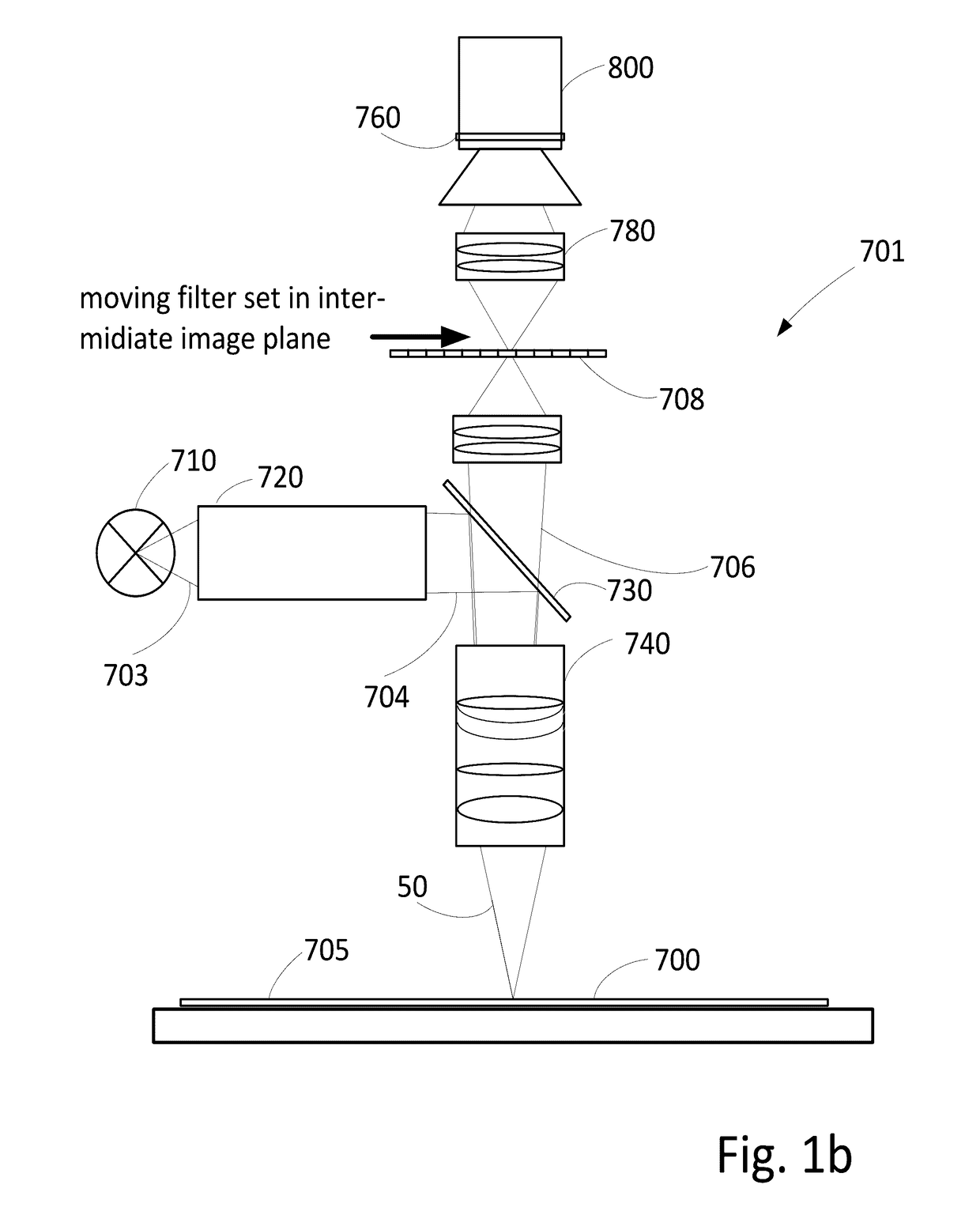Method and Assembly for Determining the Thickness of a Layer in a Sample Stack
a technology of sample stack and thickness, applied in the direction of instruments, measurement devices, scientific instruments, etc., can solve the problems of time-consuming, requiring several seconds per point, limited ellipsometric measurement, etc., and achieve the effect of accurate measurement of the thickness of one, high speed and high accuracy
- Summary
- Abstract
- Description
- Claims
- Application Information
AI Technical Summary
Benefits of technology
Problems solved by technology
Method used
Image
Examples
embodiment
2. Embodiment
Measurement of One SiO2-Layer on Silicon
[0113]FIG. 10 illustrates a different embodiment where the same measurement set-up was used as described above for the first embodiment. The present embodiment, however, measures only one layer thickness value which is the thickness of a SiO2-layer on silicon. The reflection function may be simulated and the simulation can be adapted to the values by fitting with, for example, a Levenberg-Marquardt-algorithm. The thicknesses of the layer range from 20 nm to 200 nm. Six wavelength ranges are used for the measurements which are designated with numerals 810, 820, 830, 840, 850 and 860. Since six values are measured for only one unknown thickness value the statistic error will be increased. Also, the measuring range is increased: The wavelength range 820 at about 500 nm, would not allow distinguishing between the thickness values 20 nm, 150 nm and 200 nm. With such a measurement alone the result would be ambiguous. The measurement at ...
PUM
 Login to View More
Login to View More Abstract
Description
Claims
Application Information
 Login to View More
Login to View More - R&D
- Intellectual Property
- Life Sciences
- Materials
- Tech Scout
- Unparalleled Data Quality
- Higher Quality Content
- 60% Fewer Hallucinations
Browse by: Latest US Patents, China's latest patents, Technical Efficacy Thesaurus, Application Domain, Technology Topic, Popular Technical Reports.
© 2025 PatSnap. All rights reserved.Legal|Privacy policy|Modern Slavery Act Transparency Statement|Sitemap|About US| Contact US: help@patsnap.com



